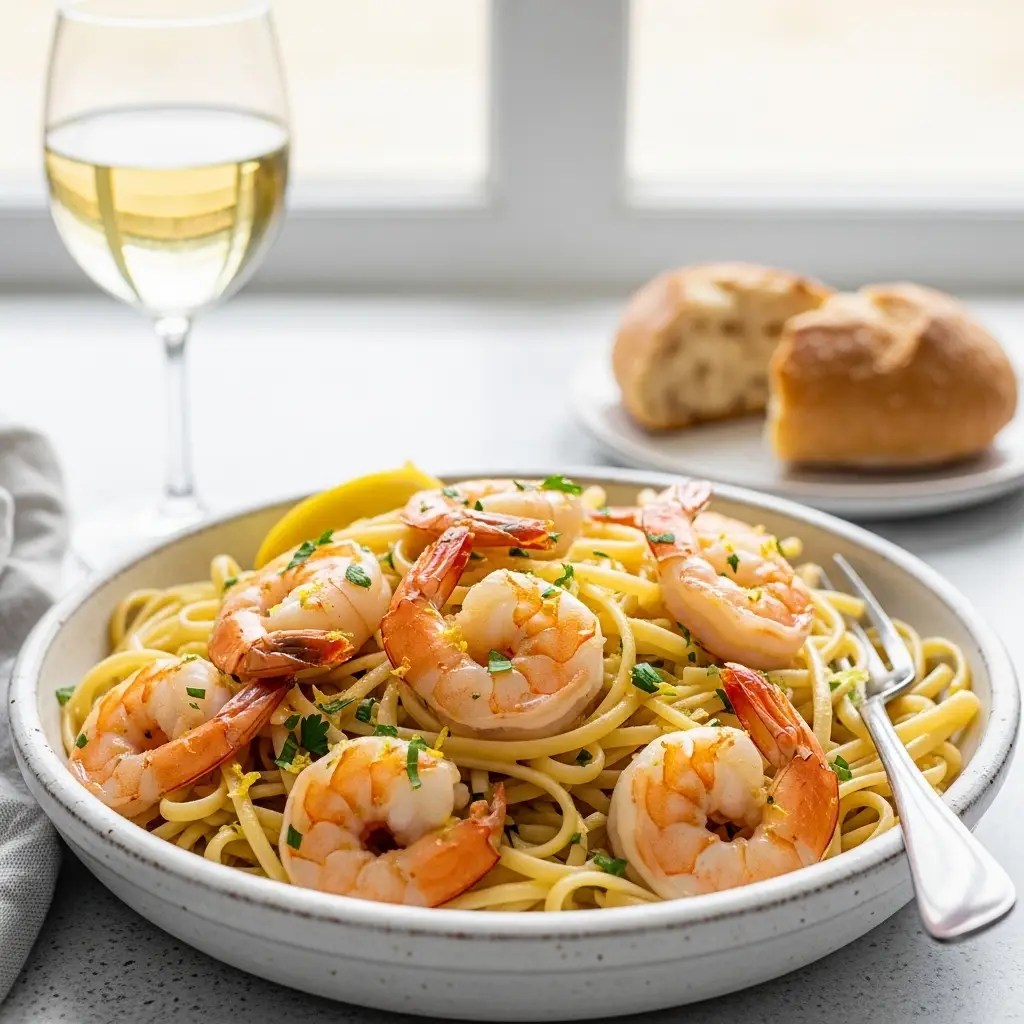Ingredients
Equipment
Method
- Bring a large pot of heavily salted water to a boil. Add the linguine and cook according to package directions until al dente. Before draining, reserve 1 cup of the pasta water, then drain the pasta.
- While the pasta is cooking, pat the shrimp very dry with paper towels. Season them with 1/2 tsp kosher salt and 1/4 tsp black pepper.
- In a large skillet, melt 4 tablespoons of butter with the olive oil over medium heat. Add the minced garlic and red pepper flakes and cook until fragrant, about 30-60 seconds. Be careful not to burn the garlic.
- Increase the heat to medium-high. Add the seasoned shrimp to the skillet in a single layer. Cook for 1-2 minutes per side, until they are pink and just opaque. Do not overcook. Remove the shrimp from the skillet and set aside on a plate.
- Pour the white wine into the hot skillet to deglaze, scraping up any browned bits from the bottom of the pan. Bring to a simmer and let it reduce by about half, which should take about 2 minutes. Stir in the lemon juice and lemon zest.
- Reduce heat to low. Add the remaining 2 tablespoons of cold butter and swirl the pan until it melts to create a creamy sauce. Return the cooked shrimp to the skillet. Add the drained pasta and half of the chopped parsley. Toss everything together to coat well. If the sauce is too thick, add a splash of the reserved pasta water until it reaches your desired consistency.
- Serve immediately, garnished with the remaining fresh parsley and an extra sprinkle of red pepper flakes if desired.
Notes
For the best flavor, use fresh garlic and lemon juice, not the bottled kind.
To make this recipe without wine, substitute the wine with an equal amount of chicken or vegetable broth and add an extra squeeze of lemon juice at the end.
Patting the shrimp dry is a critical step to ensure they sear nicely instead of steaming in the pan.
To make this recipe without wine, substitute the wine with an equal amount of chicken or vegetable broth and add an extra squeeze of lemon juice at the end.
Patting the shrimp dry is a critical step to ensure they sear nicely instead of steaming in the pan.
